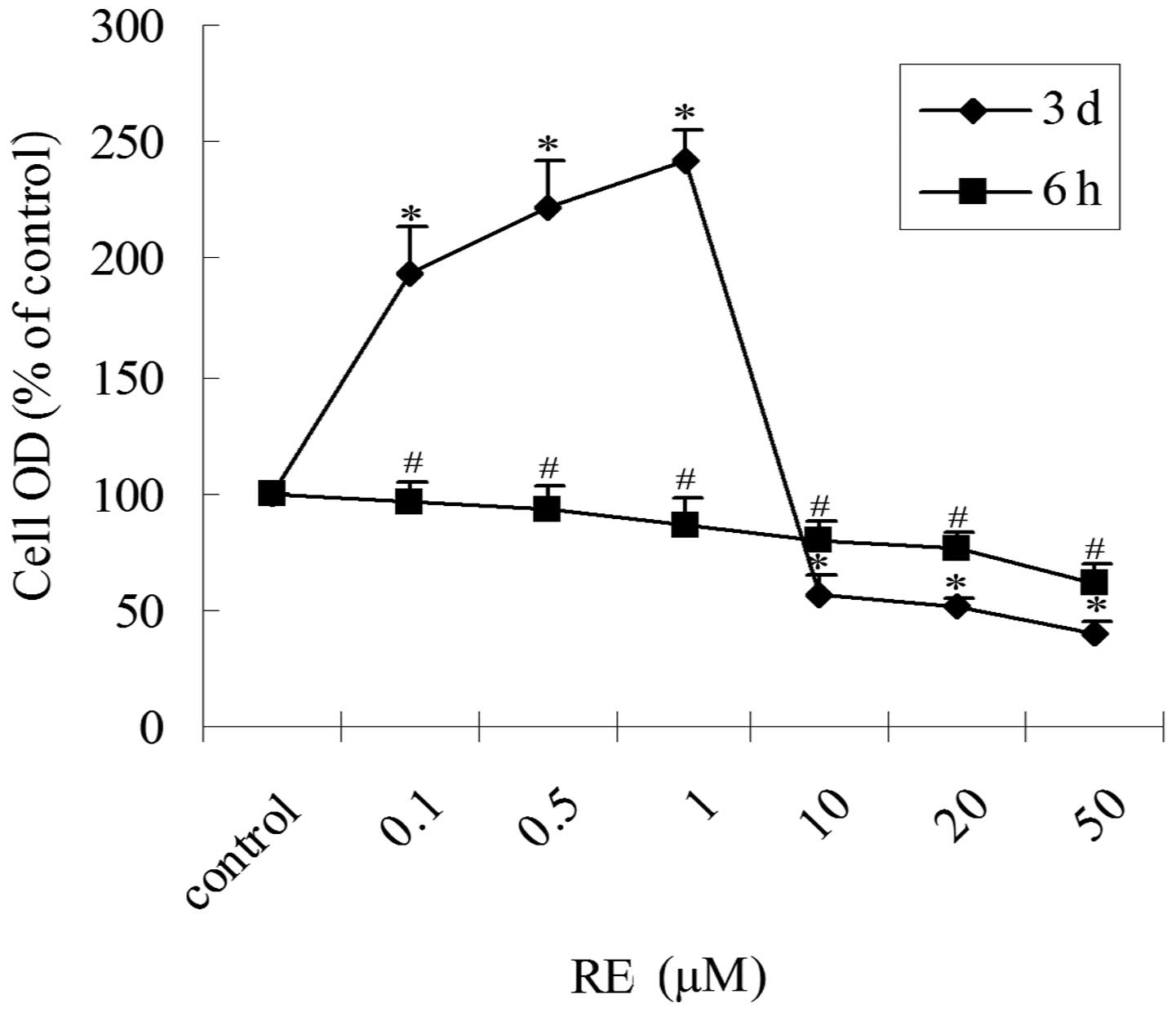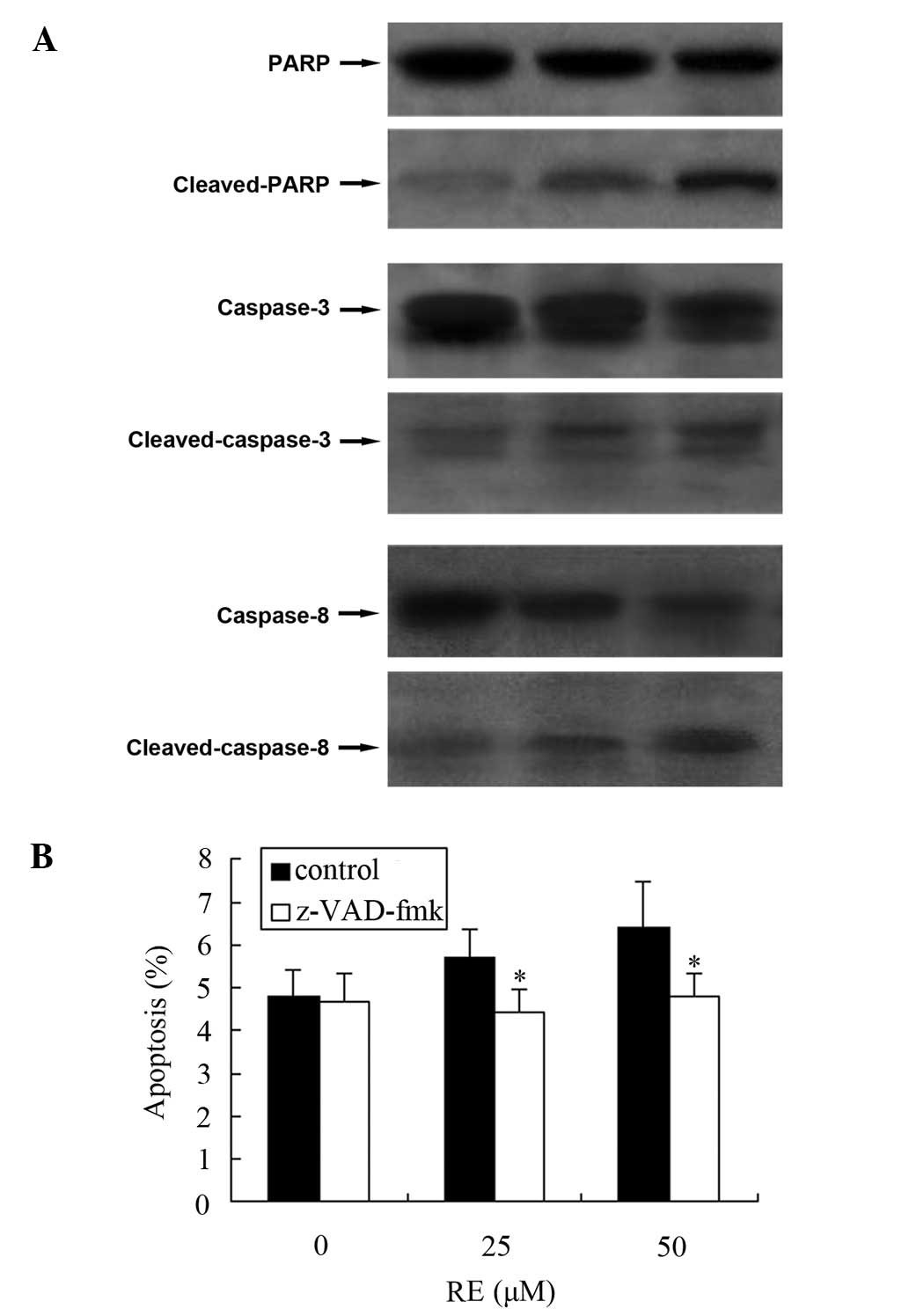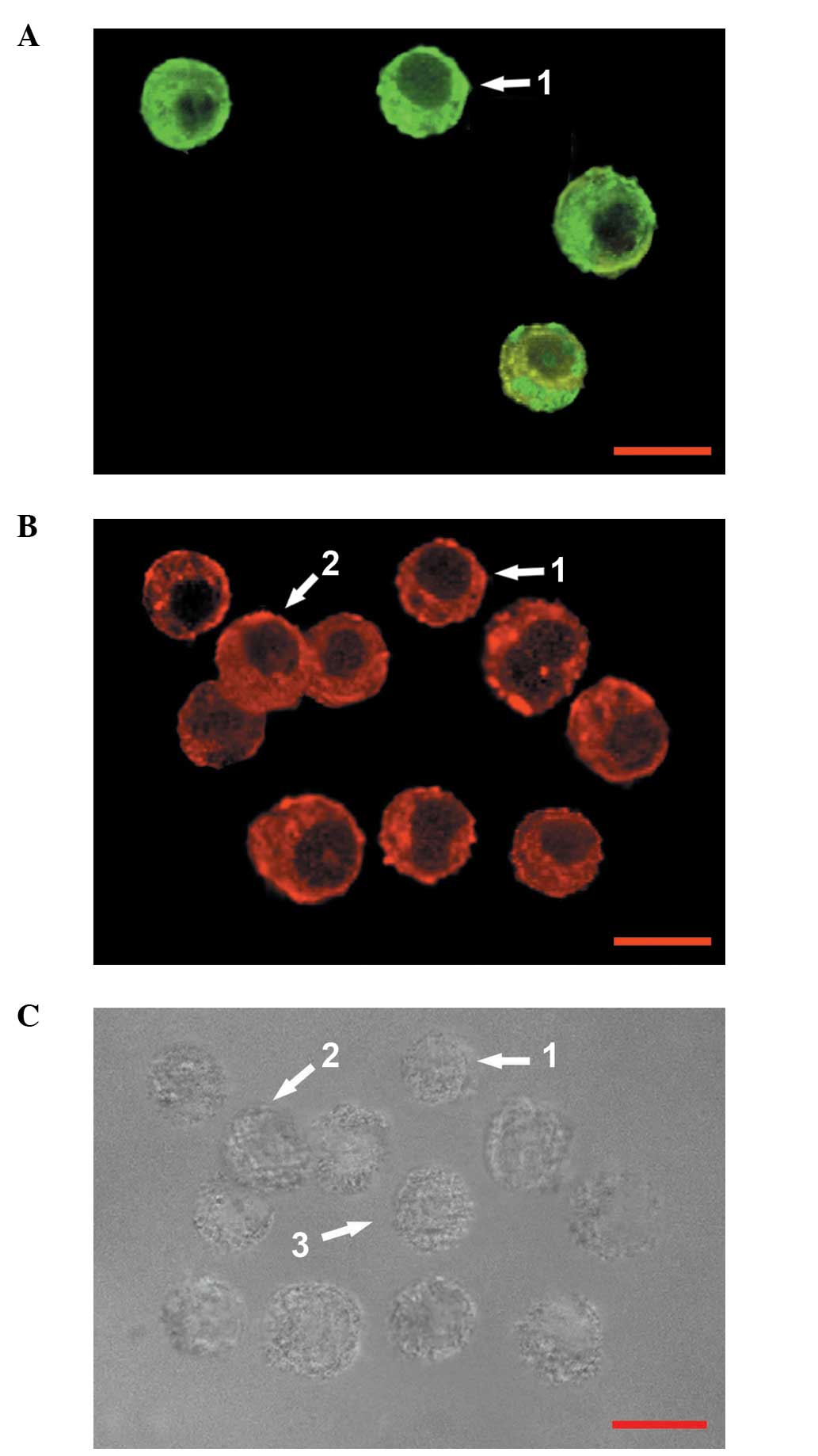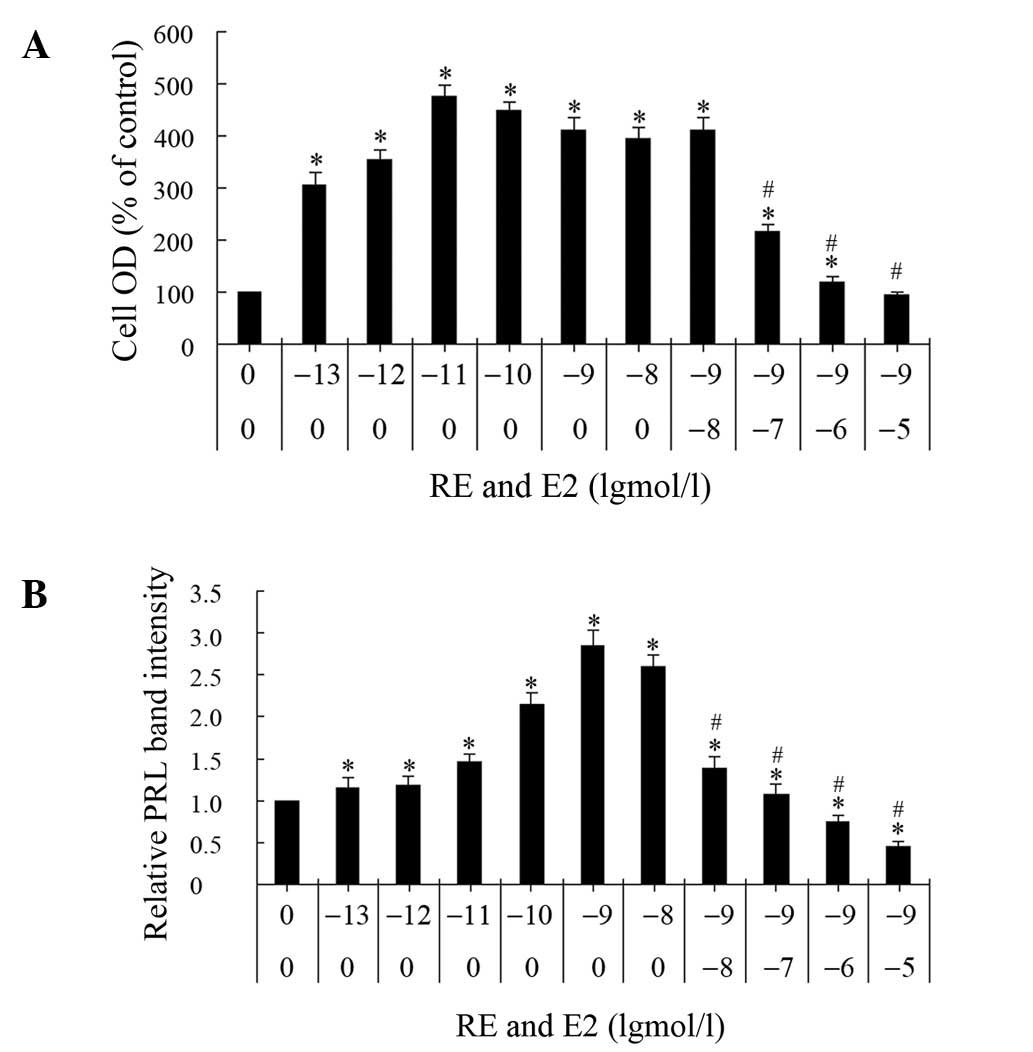|
1
|
Heaney AP, Fernando M and Melmed S:
Functional role of estrogen in pituitary tumor pathogenesis. J Clin
Invest. 109:277–283. 2002. View Article : Google Scholar : PubMed/NCBI
|
|
2
|
Freeman ME, Kanyicska B, Lerant A and Nagy
G: Prolactin: structure, function, and regulation of secretion.
Physiol Rev. 80:1523–1631. 2000.PubMed/NCBI
|
|
3
|
Yin P, Kawashima K and Arita J: Direct
actions of estradiol on the anterior pituitary gland are required
for hypothalamus-dependent lactotrope proliferation and secretory
surges of luteinizing hormone but not of prolactin in female rats.
Neuroendocrinology. 75:392–401. 2002. View Article : Google Scholar
|
|
4
|
Caporali S, Imai M, Altucci L, et al:
Distinct signaling pathways mediate stimulation of cell cycle
progression and prevention of apoptotic cell death by estrogen in
rat pituitary tumor PR1 cells. Mol Biol Cell. 14:5051–5059. 2003.
View Article : Google Scholar : PubMed/NCBI
|
|
5
|
Friend KE, Ang LW and Shupnik MA: Estrogen
regulates the expression of several different estrogen receptor
mRNA isoforms in rat pituitary. Proc Natl Acad Sci USA.
92:4367–4371. 1995. View Article : Google Scholar : PubMed/NCBI
|
|
6
|
Jaffrain-Rea ML, Petrangeli E, Ortolani F,
et al: Cellular receptors for sex steroids in human pituitary
adenomas. J Endocrinol. 151:175–184. 1996. View Article : Google Scholar : PubMed/NCBI
|
|
7
|
Nakao H, Koga M, Arao M, et al:
Enzyme-immunoassay for estrogen receptors in human pituitary
adenomas. Acta Endocrinol (Copenh). 120:233–238. 1989.PubMed/NCBI
|
|
8
|
Lee SY, Ahn BT, Baik SH and Lee BL:
Tamoxifen inhibits GH3 cell growth in culture via enhancement of
apoptosis. Neurosurgery. 43:116–123. 1998.PubMed/NCBI
|
|
9
|
Bowers JL, Tyulmenkov VV, Jernigan SC and
Klinge CM: Resveratrol acts as a mixed agonist/antagonist for
estrogen receptors alpha and beta. Endocrinology. 141:3657–3667.
2000.PubMed/NCBI
|
|
10
|
Jang M, Cai L, Udeani GO, et al: Cancer
chemopreventive activity of resveratrol, a natural product derived
from grapes. Science. 275:218–220. 1997. View Article : Google Scholar : PubMed/NCBI
|
|
11
|
Boockfor FR, Hoeffler JP and Frawley LS:
Cultures of GH3 cells are functionally heterogeneous:
thyrotropin-releasing hormone, estradiol and cortisol cause
reciprocal shifts in the proportions of growth hormone and
prolactin secretors. Endocrinology. 117:418–420. 1985. View Article : Google Scholar
|
|
12
|
Iwasaka T, Umemura S, Kakimoto K, Koizumi
H and Osamura YR: Expression of prolactin mRNA in rat mammary gland
during pregnancy and lactation. J Histochem Cytochem. 48:389–396.
2000. View Article : Google Scholar : PubMed/NCBI
|
|
13
|
Shaw-Bruha CM, Pennington KL and Shull JD:
Identification in the rat prolactin gene of sequences homologous to
the distal promoter of the human prolactin gene. Biochim Biophys
Acta. 1442:304–313. 1998. View Article : Google Scholar : PubMed/NCBI
|
|
14
|
Wang C, Hu ZQ, Chu M, et al: Resveratrol
inhibited GH3 cell growth and decreased prolactin level via
estrogen receptors. Clin Neurol Neurosurg. 114:241–248. 2012.
View Article : Google Scholar : PubMed/NCBI
|
|
15
|
Joe AK, Liu H, Suzui M, Vural ME, Xiao D
and Weinstein IB: Resveratrol induces growth inhibition, S-phase
arrest, apoptosis, and changes in biomarker expression in several
human cancer cell lines. Clin Cancer Res. 8:893–903.
2002.PubMed/NCBI
|
|
16
|
Chu M, Hu ZQ, Wei LL, Zhang SZ, Hu EX and
Dong Q: Inhibitory effect of resveratrol in pituitary GH3 cells.
Chin J Neurosurg. 21:105–109. 2005.(In Chinese).
|
|
17
|
Yamashita H, Okadome T, Franzén P, ten
Dijke P, Heldin CH and Miyazono K: A rat pituitary tumor cell line
(GH3) expresses type I and type II receptors and other cell surface
binding protein(s) for transforming growth factor-beta. J Biol
Chem. 270:770–774. 1995. View Article : Google Scholar : PubMed/NCBI
|
|
18
|
Kakeya T, Takeuchi S and Takahashi S:
Epidermal growth factor, insulin, and estrogen stimulate
development of prolactin-secreting cells in cultures of GH3 cells.
Cell Tissue Res. 299:237–243. 2000. View Article : Google Scholar : PubMed/NCBI
|
|
19
|
Kansra S, Yamagata S, Sneade L, Foster L
and Ben-Jonathan N: Differential effects of estrogen receptor
antagonists on pituitary lactotroph proliferation and prolactin
release. Mol Cell Endocrinol. 239:27–36. 2005. View Article : Google Scholar : PubMed/NCBI
|
|
20
|
Schreihofer DA, Stoler MH and Shupnik MA:
Differential expression and regulation of estrogen receptors (ERs)
in rat pituitary and cell lines: estrogen decreases ERalpha protein
and estrogen responsiveness. Endocrinology. 141:2174–2184.
2000.
|
|
21
|
Mitchner NA, Garlick C, Steinmetz RW and
Ben-Jonathan N: Differential regulation and action of estrogen
receptors alpha and beta in GH3 cells. Endocrinology.
140:2651–2658. 1999.PubMed/NCBI
|














